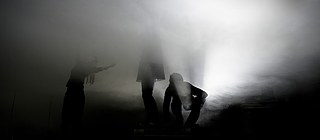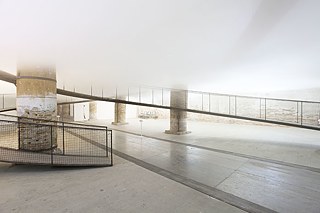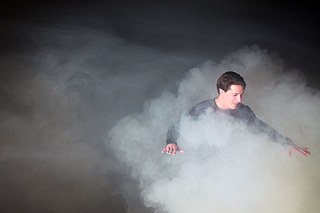Curator meets creator
Sensuality of Air: Outside_In

For the exhibition ‘Dynamics of Air’, Dr Malte Wagenfeld worked with climate engineering company ‘Transsolar’ on the project ‘Outside_In’. As part of the exhibition, there will be an experiential environment in the gallery that simulates the type of microclimatic perceptual experiences that might be encountered in outside environments — such as a park, forest, beach, or a combination of these settings.
By Dr Malte Wagenfeld
I first met with Thomas Auer and his team in September 2017 at the Transsolar headquarters located on the green outskirts of Stuttgart. This was when we discussed the idea of jointly developing a project for this exhibition. I presented my research into the ‘aesthetics of air’ and mentioned my fascination with what makes the outside air feel so different from the inside. This might seem like an obvious matter, hardly an insight, however it is in fact extremely difficult to quantify.
I am captivated by the dynamics and transience of microclimates and phenomena. Consider the dappled shade and sun when walking under and between trees, or experiencing a pocket of cool moist air under a tree before entering a patch of radiant warmth. When investigating the nature of something as seemingly unremarkable as a breeze, we discover that it is always changing direction and intensity, it is temporally entirely unpredictable and aperiodic. But most surprisingly, it is incredibly localised. A simple observational experiment will reveal this: study the leaves on a tree and you will find one leaf that is flittering in the breeze whilst its immediate neighbour might be entirely still.
But whereas the Reversío installation in Toronto used many natural systems and vegetation creating an environment that resembled a greenhouse or rainforest, the installation Outside_In for Dynamics of Air will be markedly different. The visual environment will be heavily subdued and almost neutral, there are to be no visual cues as to what might be perceptually encountered within the different parts of the gallery space. It is to be an overwhelmingly bodily experience of breezes, temperature variations: radiant warmth, dappled warm and cool pockets of air, humidity, moist air, dry air, smells and so on.
Creating microclimates in a gallery space
Different microclimates will be encountered as the visitor moves through the space, and these microclimates will themselves be constantly transient and morphing. There are many challenges in creating such an environment inside a gallery. Firstly, the gallery as a building needs to be fully air-conditioned, so the installation must work with this reality, harvesting the cool dry air to power part of the system. Heat-pumps, UV lamps, misters, humidifiers and fans all controlled by microprocessors and specially coded algorithms will form part of the magic.Outside_In is an experiment as much as a gallery installation. Investigating how this can be created in a dedicated, specially designed building — new or retrofitted — using sustainable and passive design strategies would then constitute the next stage.

